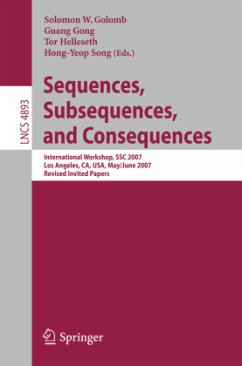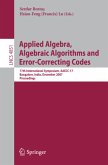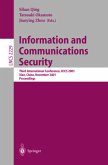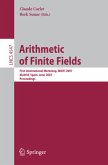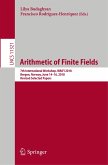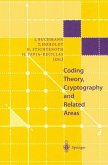These are the proceedings of the Workshop on Sequences, Subsequences, and Consequences that was held at the University of Southern California (USC), May 31 - June 2, 2007. There were three one-hour Keynote lectures, 16 invited talks of up to 45 minutes each, and 1 "contributed" paper. The theory of sequences from discrete symbol alphabets has found practical applications in many areas of coded communications and in cryptography, - cluding: signal patterns for use in radar and sonar; spectral spreading sequences for CDMA wireless telephony; key streams for direct sequence stream-cipher cryptography; and a variety of forward-error-correctingcodes. The workshopwasdesigned to bring leading researcherson "sequences"from aroundtheworldtopresenttheirlatestresults,interchangeinformationwithone another, and especially to inform the larger audience of interested participants, includingfaculty,researchers,scholars,andstudentsfromnumerousinstitutions, as well as the readers of these proceedings, about recent developments in this important ?eld. There were invited speakers from Canada, China, Germany, India, Israel, Norway, Puerto Rico, and South Korea, in addition to those from the USA. Support for the workshop was generously provided by the O?ce of the Dean of the Viterbi School of Engineering, by the Center for Communications Research (CCR-La Jolla), and by the United States National Science Foundation (NSF). This support is hereby gratefully acknowledged.

